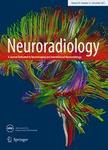版权所有:内蒙古大学图书馆 技术提供:维普资讯• 智图
内蒙古自治区呼和浩特市赛罕区大学西街235号 邮编: 010021

作者机构:Hosp Goethe Univ Inst Neuroradiol Schleusenweg 2-16 D-60528 Frankfurt Germany
出 版 物:《NEURORADIOLOGY》 (神经放射学)
年 卷 期:2016年第58卷第4期
页 面:383-390页
核心收录:
学科分类:0831[工学-生物医学工程(可授工学、理学、医学学位)] 100207[医学-影像医学与核医学] 1006[医学-中西医结合] 1002[医学-临床医学] 1001[医学-基础医学(可授医学、理学学位)] 08[工学] 1010[医学-医学技术(可授医学、理学学位)] 100106[医学-放射医学] 1009[医学-特种医学] 10[医学] 100602[医学-中西医结合临床]
主 题:WEB Endovascular treatment Intrasaccular flow-disruption Complex aneurysms
摘 要:The introduction of the Woven Endobridge (WEB) device increases the feasibility of endovascular treatment of wide-neck bifurcation aneurysms with limitations given by currently available sizes and shapes of the device. Parallel to other studies, we used the new device for selected patients who were no optimal candidates for established techniques like neurosurgical clipping or endovascular coiling. We aimed to report the angiographic and clinical results of WEB implantations or combinations between WEB and coiling or intracranial stents. We reviewed the records of n = 23 interventions in 22 patients with unruptured wide-neck aneurysms (UIA) who were assigned for aneurysm treatment with the use of the WEB or adjunctive techniques. Interventional procedures and clinical and angiographic outcomes are reported for the periprocedural phase and in mid-term FU. Of the included 22 patients, six patients needed additional coiling, intracranial stenting, or implantation of a flow diverter. WEB implantation was technically feasible in 22 out of the 23 interventions. Follow-up angiographic imaging proved total or subtotal occlusion of the aneurysm in 19 of 22 cases. Two minor recurrences remained stable during a period of 15 months. One patient with a partially thrombosed giant MCA aneurysm had a major recurrence and was retreated with a second WEB in combination with coiling. Despite of unfavorable anatomic conditions, broad-based and large UIA endovascular treatment with the WEB and adjunctive techniques was feasible with a low risk of complications and promising occlusion rates in mid-term follow-up.